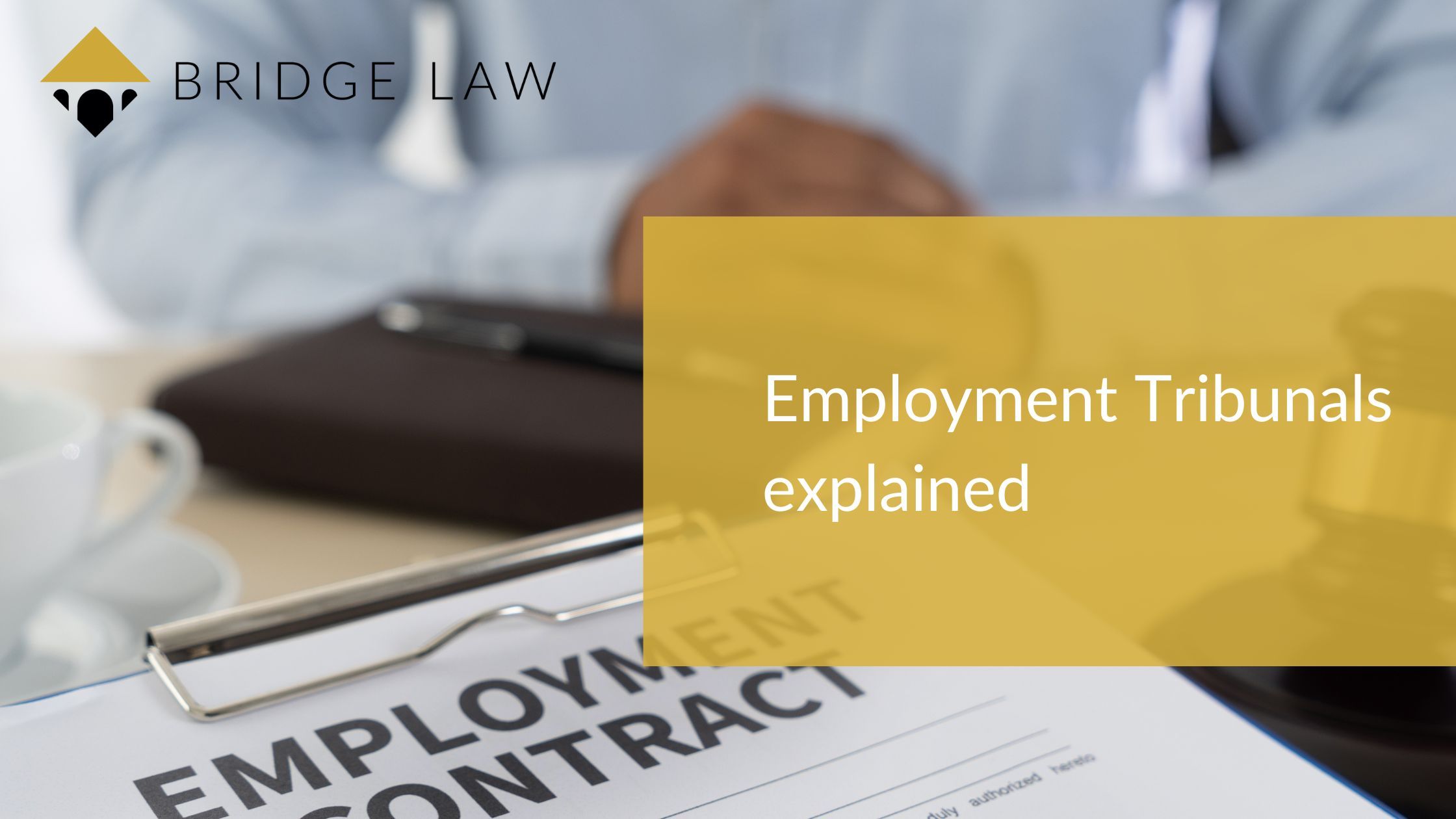Employment Tribunals explained

An Employment Tribunal is a place where an employee makes a claim against their employer for acting unfairly towards them.
If you feel that your employer has acted unlawfully towards you and you would like to escalate a claim to an Employment Tribunal, it’s essential to know the process so that you are prepared.
In this article, we will explain the process of Employment Tribunals and some of the things you should be aware of before making and during a claim.
Examples of issues dealt with in Employment Tribunals
Whilst there are many reasons that you may make a claim against an employer, here are some of the main issues that are handled by Employment Tribunals:
- Discrimination on the grounds of race, sexual orientation, gender, disability, age or sex
- Unfair dismissal
- Wrongful dismissal
- Unlawful Wage deductions
- Equal pay/differences in pay due to discrimination
What to do before making an Employment Tribunal claim
Before you make a claim to escalate an employment issue to a tribunal, there are a few steps you should take.
First, you should make sure that your allegation falls within the time limit to make a claim. This is for most cases – three months from the date of your termination of employment, however, sometimes an extension may be given depending on the circumstances.
Prior to escalating a claim to the tribunal stage, you should always take part in the organisation’s dispute resolution process, such as grievance procedures. Whilst doing so, both you and your employer should make sure the Acas Code of Practice is followed during the resolution procedures.
Following the employer’s own procedures, if you still feel that you want to challenge the results that have led to the dismissal, you should go through the early conciliation process by contacting Acas. They can try to reach a resolution without the need to go to tribunal. The tribunal time limits can be extended to allow conciliation to take place.
If this does not settle the case, you get a conciliation certificate, which you need to reference on your claim to the tribunal. This will prove that no settlement was possible between you and your employer after Acas’ early conciliation process. If the case does settle then a settlement agreement can be prepared.
Throughout the dispute resolution procedures, you should ensure that you have all of the information – such as contracts, letters, emails and any other correspondence relating to the claim – documented to prepare for the final hearing, if the case is taken to an Employment Tribunal hearing.
The process of an Employment Tribunal claim
Once all of these steps have been followed and it is clear that your issue is worthy of further action, you can start the Employment Tribunal claim by completing an ET1 claim form, and submitting this to the Employment Tribunal.
Once the Employment Tribunal receives your claim, they will log it, send a copy to Acas and share a copy with your employer, who will then have to complete a separate form (an ET3) in response to the claim. There will usually be an opportunity to try to reach a settlement with the assistance of ACAS if this has not already been tried, before the case proceeds to a hearing.
Your employer – otherwise known as the respondent – will then have 28 days to return the form to the tribunal.
When the Employment Tribunal has received the response from your employer, you may be invited to a preliminary hearing – which is a smaller hearing – to delve deeper into the case and make sure any initial issues are resolved before the final hearing.This can include dismissing the claim if it is unfounded or giving directions for further evidence to be filed.
The final hearing is when all of the evidence – from both you and your employer – is heard by the Employment Tribunal, which can be an Employment Judge alone in some cases or could be a panel consisting of a legally qualified employment judge and two lay members, often from industry or other professions. This will include all of the documents and witness statements that have been prepared – by both parties – prior to the hearing taking place. Both your and the employer’s evidence will be given, including that of any witnesses. This will include being asked questions on your evidence by the other party and by the people sitting on the Tribunal that make the decision.
After this, representatives from both parties will sum up their cases, allowing the tribunal to adjourn or – less commonly – conclude the results straight away. The time it takes for the tribunal to reach a decision often varies on a case-by-case basis.
If the decision is in the favour of the employee – known as the claimant- the tribunal can award you in different ways, depending on the type of claim and the issues involved.
The awards can be:
- Getting your job back – reinstatement
- Returning to the organisation to perform a different role
- Receiving compensation
- Getting paid the wages that were due
- Interim injunctions can also be issued and/or a recommendation/declaration that the employer should make improvements in the workplace following the incident.
If you are currently facing an issue with your employer, past or present and believe you may be entitled to make a claim, contact our specialist employment law solicitors to assess your case on a no-win-no-fee basis. Call us on 01484 442 700 (Holmfirth office), 0161 427 0084 (Marple Bridge office) or email info@bridgelawsolicitors.co.uk.
Written by Nikki Sharpe

